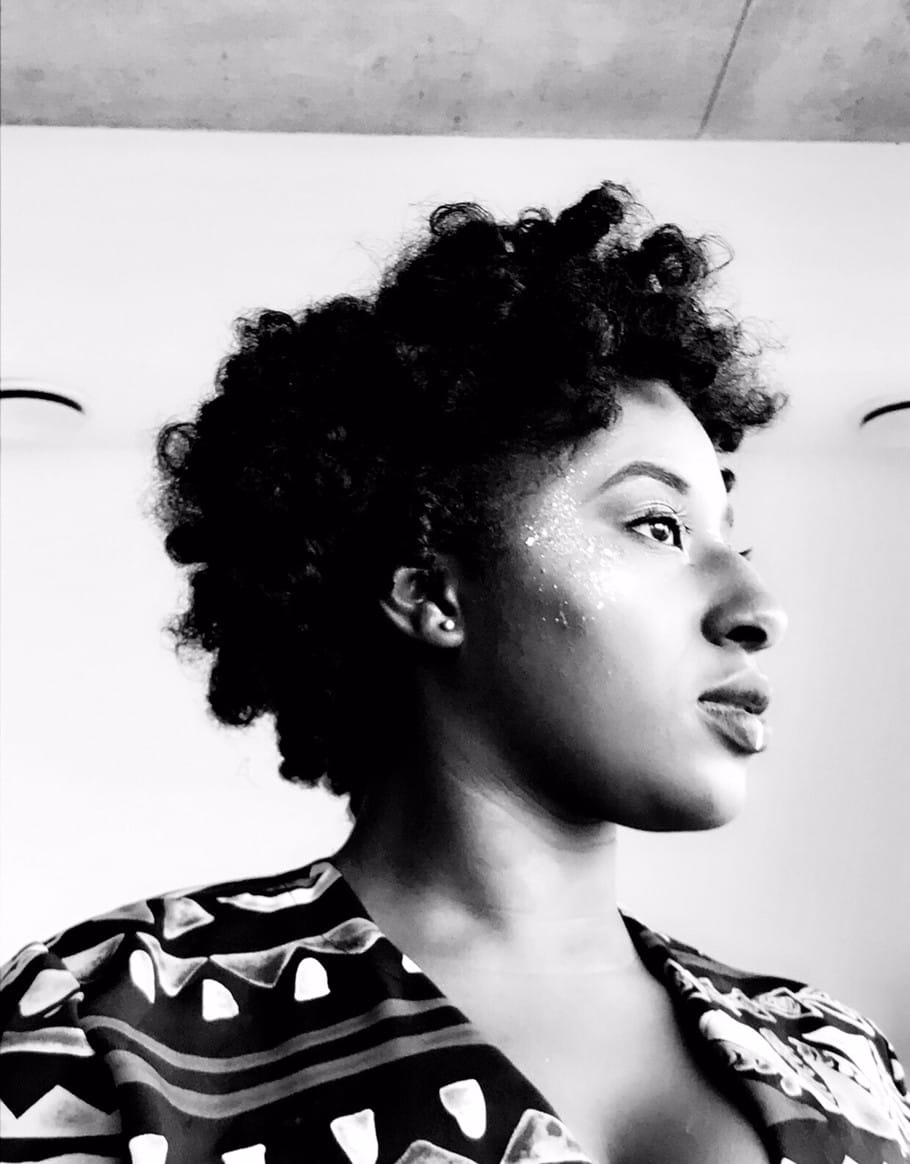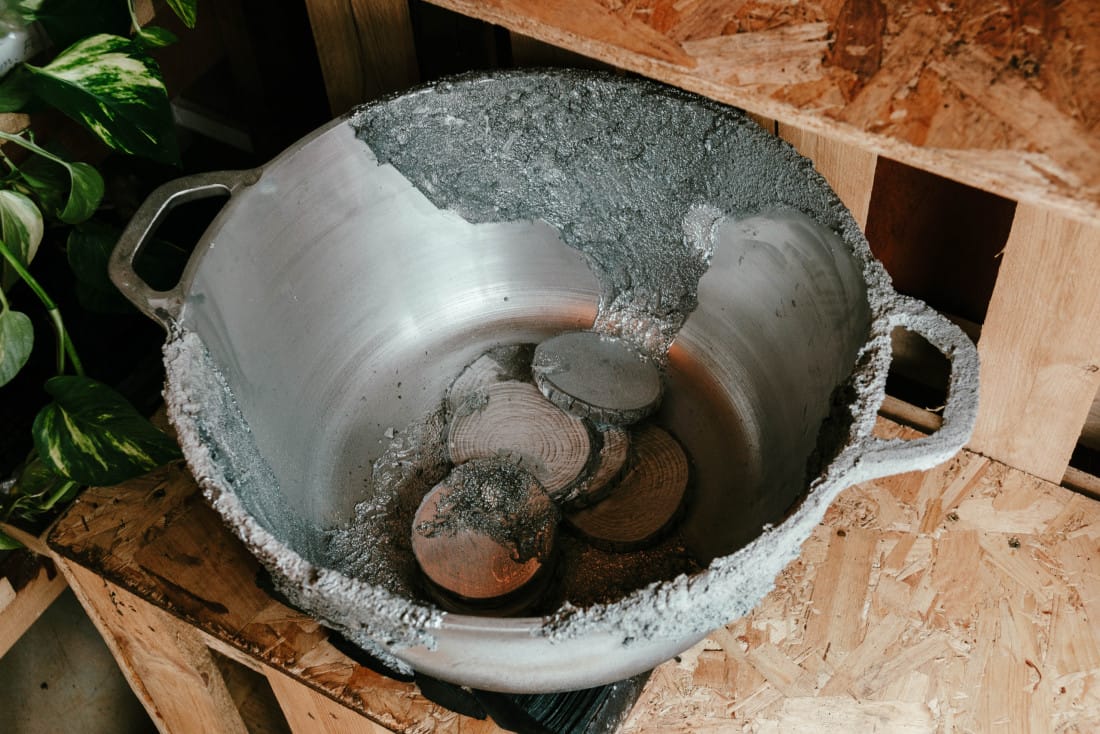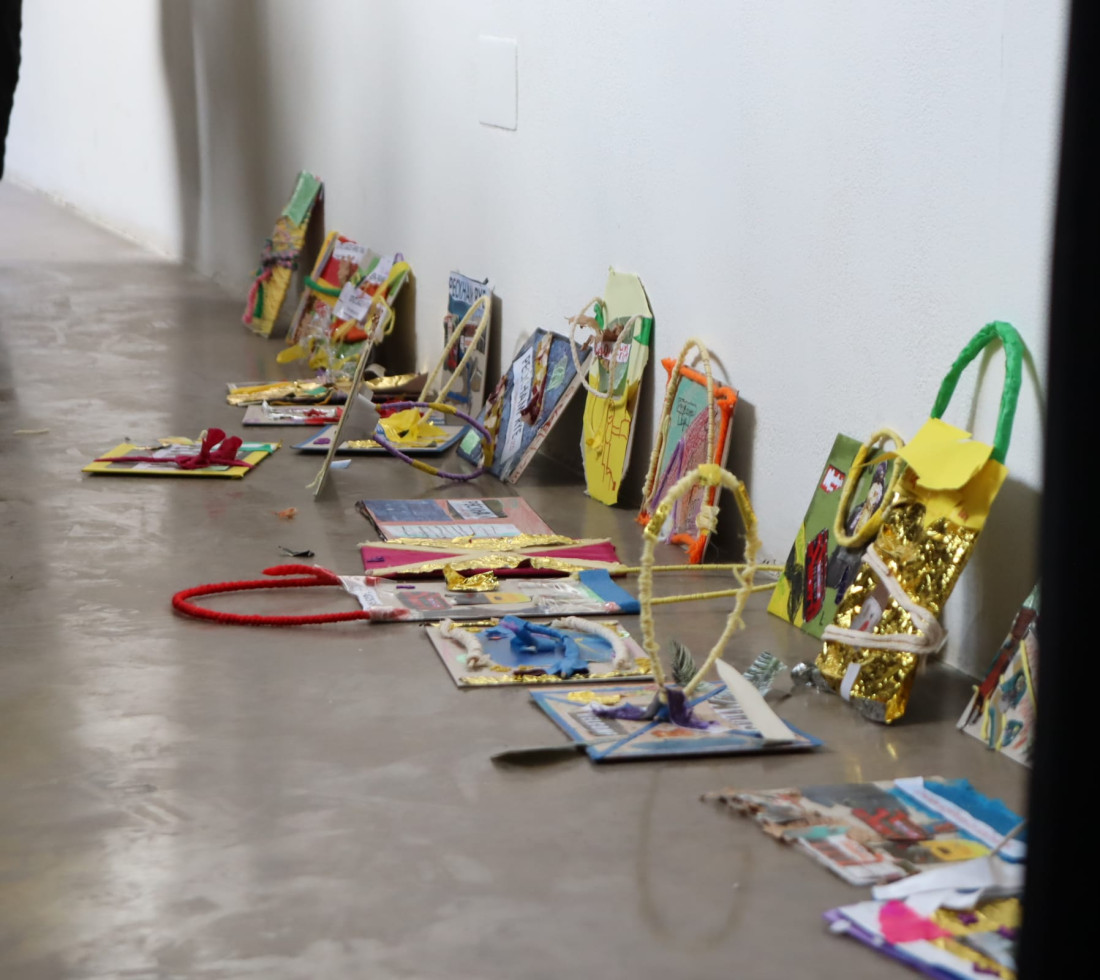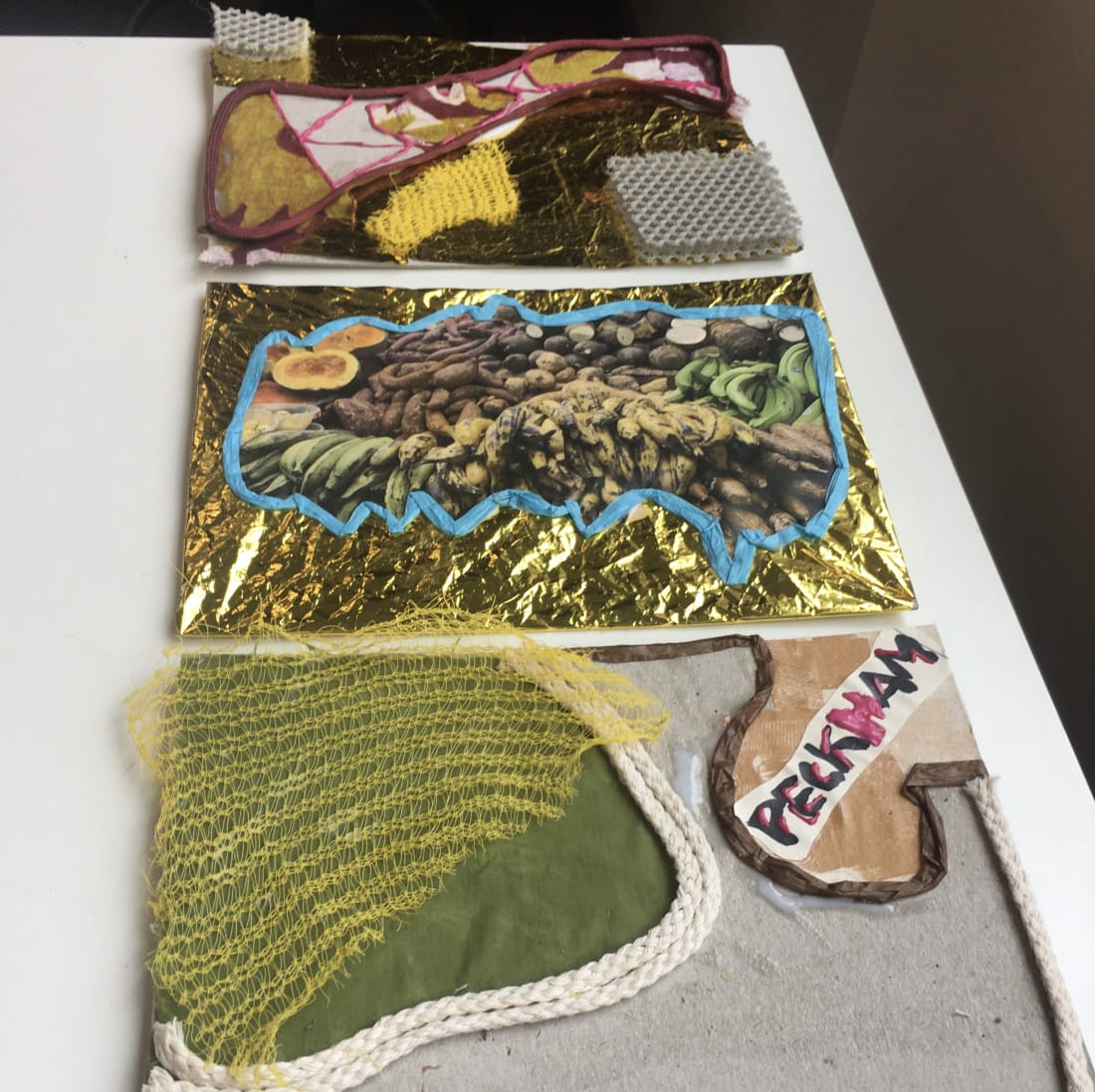
Image courtesy Barbara Majek
We invited south London artist Barbara Majek to work with us on our school workshops for the exhibition Lagos, Peckham, Repeat: Pilgrimage to the Lakes. Majek led creative sessions with young people to explore the themes and works in the show. Here, we spoke to the artist about her experience and thoughts on the school sessions and her wider practice.
Can you tell us a little bit about your practice?
I’m a super curious person, a seeker, and a lover of beauty. As an interdisciplinary artist, researcher, and facilitator. I’m loving how it’s currently taking shape and how my art research and participation inform each other. I’m constantly seeking ways to share my work in accessible forms, prioritising space for play, interrogation, openness, exchange, and creative freedom. I use materiality as a constant source of information, often transforming abandoned or unusual materials to develop new patterns, textures, and fibres from scratch. I enjoy using various methods such as embroidery, drawing, sculpture, collage, public art, installation, writing, poetry and sound. It’s always a tactile experimental process.
How did you become an artist and researcher? What has your career path been so far?
I’ve always been an artist. It’s inherited from my mother I’m sure: my eye and taste are from her. However, my journey to accepting being an artist hasn’t been straightforward; it’s been organic. I veered towards sociology before returning to art, pursuing multi-hyphenated degree subjects that are always a mouthful to say! Through my BA in Fashion Textiles Embroidery at UAL, I interrogated my curiosity with material. In my third year, I developed an appreciation for research and writing, rekindling my interest in social sciences. I can now speak about it romantically, but it was actually quite challenging and isolating—a rite of passage as a Nigerian woman, British-born, navigating higher arts education with institutional racism at play. I also felt constrained and sought to expand beyond the body, with several questions to tackle, leading me to pursue a Masters of Research at the Royal College of Art, where I delved deeper into my interdisciplinary art, research instincts, and community engagement.

Image Courtesy Barbara Majek
Can you share a little with us about how your connections to both London and Nigeria play a role in your work and then also in what you were doing at the South London Gallery?
First and foremost, I’m south London born and bred! My family’s deep migrant histories across southeast London tie us to the Nigerians who migrated to London between the 1960s and ’80s, contributing to the vibrant community in places like Peckham. For my final undergrad project, I explored the duality of living in Peckham through the lens of Yoruba mythology. Growing up in the area, I reluctantly accompanied my mom to the market, gradually recognising the vital role these spaces play. South east London markets served as hubs for African-Caribbean communities to survive, nourish themselves, and connect with their roots, juxtaposed with the rude awakening of gentrification, witnessing the rapid changes and cultural erasure. Yoruba mythology and storytelling serve as guiding forces as I reflect on and grapple with the impacts of gentrification on marginalised communities. These themes—journeying, memory, erasure, imagination, heritage—are central to my work as I seek to explore and archive this expression.
You were working with the SLG on school workshops for the Lagos, Peckham, Repeat exhibition. Were you particularly inspired by any of the works in the exhibition in particular when you were devising your workshops?
The work that comes to mind, without a shadow of a doubt, is the Entitled film by Adeyemi Michael. I saw it years ago when it first came out, and it has always been ingrained in my memory. The installation at the SLG was a whole new level of experience compared to the film, which I loved. It’s truly stunning work, and the installation of his childhood living room, with its objects and items, was loved by so many students. They would literally run to the couch and point out the ‘Gele!’ (headwear) or say “We have this at home.” Those were really heart warming moments. That work deeply resonates with so many of our stories. I watched it so many times, but I never got tired. For the art tours, I intentionally started with Temitayo’s sculpture. This work encouraged the students to interact with art freely and be intrigued to see what we have in space. It also encouraged the teenagers or the too-cool-for-school students to take off their shoes and play. I found that to be really helpful in getting them comfortable in the space. It was beautiful to see how they individually and collectively brought their immediate experiences of play, curiosity, and learning into the making.

Collage artworks made by students visiting the South London Gallery
What did you actually do with the schools or with the young people that you were working with then, in the workshop element?
I found similarities between my process and Chiizii’s Research Room, Nni Bu Ogwu — where she uses mixed media and collage methods. I encouraged young people to be inspired by the beautiful layering. I think through materials as a big part of my process. In the workshops, I wanted participants to take a journey to explore this way of thinking, and they were invited to make postcards inspired by Lagos and Peckham. There was also an option to do 3D sculpture making for the students who wanted a more sensorial, tactile experience of making, which linked to Temitayo’s work. They were making replicas of that, which was so nice and bendy and flexible. Some students blended both processes and made 3D-looking postcards, which was so exciting to see. Because they’re postcards, they remind me of journeys and how you can capture a piece of somewhere or document a moment in time without actually going there. I felt incredibly honoured to facilitate that and witness over 300 postcards being made.
Did their response to the exhibition surprise you in any way? Do you have any highlights or favourite moments?
Experiencing African-Caribbean students connecting with the exhibition and with me as an artist was incredibly heart warming. And witnessing students from diverse backgrounds being really open to learn and engage with the Nigerian diaspora, art, and history in creative ways was really gratifying. There was one year five student who created a 3D postcard and named it Fishing for My Culture. It had a fishing rod with a Nigerian flag caught dangling from the end of it, and she had beautiful collage images of things that reminded her of her living in London. I was just filled with pride, because she was able to think outside the box, communicate her ideas, and execute it during the workshop, and then give it a name.The workshops showcase how important it is to provide young people with the space and time to be creative and to access creativity as well.
You also worked with the Art Assassins on the gallery’s Get It Together event. This was the launch of a podcast created by the SLG’s youth collective, questioning and exploring inclusivity and equity in the gallery sector. Can you share some of your thoughts on the event and the project?
I think this is a very important and critical question. It was nice to engage with Art Assassins and discuss it with them, and then to further those discussions at the event. This was nice. But ultimately, my question is: is this being practiced and reflected within the space of South London Gallery? How does the gallery ensure it moves beyond being something packaged and presented as a distant question to becoming a tangible reality — where local marginalised communities are genuinely reflected and can experience equity and inclusivity beyond extractive, tokenistic, or surface-level gestures we often see in cultural institutions? I’m a person who seeks the next step. What’s going to happen next? I would really like to see some of the hard work that the Art Assassins and Weyland Mckenzie-Witter, put into the project come to fruition within SLG & beyond.
What is next for you? What are you working on now?
I’m dedicating more time to my studio practice, experimenting and building a body of work, including collaborative projects with my family. Our art collective, SADE SIX, is named after our mother and us six siblings. We celebrate her creative legacies and showcase our diverse disciplines across London and Nigeria. We look forward to curating events and exhibitions.
Barbara Majek has been working with our Education team on our schools workshops and Art Assassins programme.
Stay up to date with everything she is doing by following her on Instagram.
Want to be the first to hear about our Education projects? Sign up to our email list.

Collage artworks made by students visiting the South London Gallery